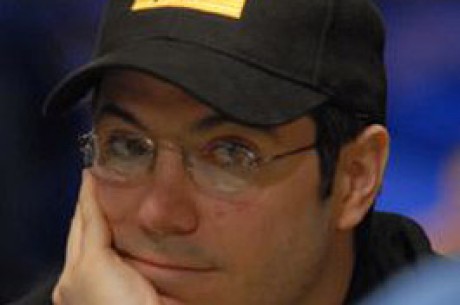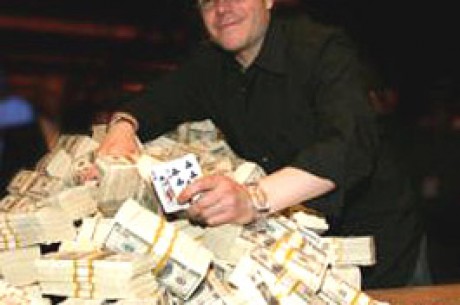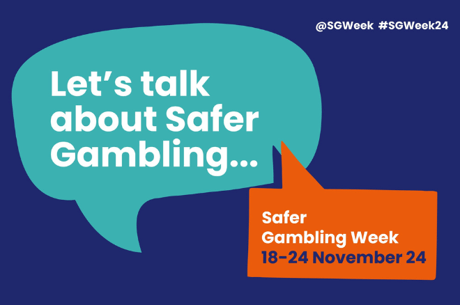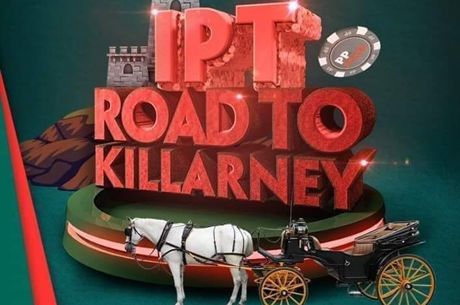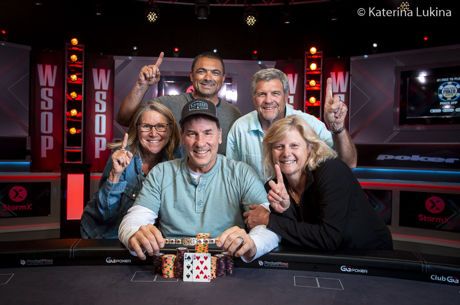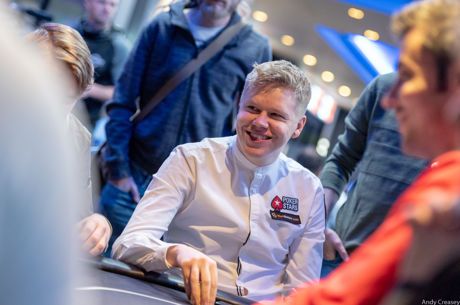2006 WSOP Wrapup: The Good, The Bad and the Ugly

After spending most of the summer at this year's World Series of Poker (how many days was it? I lost count somewhere around thirty!), it is obvious that it was the greatest series of poker tournaments in the history of the game. From the start of satellite action on June 25th to the crowning of the World Champion of Poker in Jamie Gold on August 11th, there were fantastic moments, great poker and, yes, some downsides to the event. These are all expected in one form or another, but its time we took a look back to some of the events that took place during the seven weeks of action in the Amazon Room at the Rio.
THE GOOD
First off, calling this year's World Series the greatest tournament of all time is no stretch of the expression. Every tournament that took place was welcomed with large fields and eager players who wanted to participate. The World Series staff accommodated hundreds of alternates, working them into the event during the play of tournaments while not shorting the plethora of satellite action or cash games. This was a monumental achievement by the Harrah's staff and they should be greatly applauded for their efforts.
ESPN does have to get some credit as well for their pay-per-view broadcast of the Championship Event (I purchased it at $24.95 and it was well worth it). While the rest of their broadcast schedule could have been reworked to have captured some of the greater moments that happened during the event, the PPV, hosted by consummate professionals Phil Gordon and Ali Nejad (as well as many guest hosts, including Doyle Brunson, Chris Ferguson and Jennifer Harman), was well run and highly entertaining. Viewers couldn't see the hole cards for this show (expected, as information from the broadcast could have been passed to the players), which left it to Gordon and Nejad to speculate on what the players were holding. It also did whet the appetite for the full broadcast of the Championship Event, which starts on August 22nd.
The $50,000 H. O. R. S. E. tournament went above and beyond expectations. Most expected a small field of only seventy or eighty players, so when 143 came to the felt for the start of the biggest buy-in tournament in WSOP history it was magical. The final table held some of the biggest names in the game (as expected) as Brunson, Phil Ivey and Chip Reese all made it. The final heads up battle between Reese and Andy Bloch was an excellent demonstration of poker and thoroughly showed why an event such as this should become a staple of the World Series. There were some issues, however, but we'll get to those in a moment.
When it comes to the play of the rest of the tournament, there were some great moments there as well. At the beginning of the tournament, there was actually a betting line that no one would take two bracelets this year (and the heavy action there was that there wouldn't be). There was not only one but two double bracelet winners in this year's action (making some sports books some nice change) in Bill Chen and the breakout star of the 2006 World Series, Jeff Madsen. Chen demonstrated a love of the game of poker, smiling and laughing with his tablemates on the way to his two bracelets and should also give his book "The Mathematics of Poker" a great selling point when it hits the bookshelves in the fall. Madsen was simply amazing; at barely 21 years old, he not only won two No-Limit events but final tabled at Omaha and Seven Card, showing that he isn't just a No-Limit player. If ever a star was born this year, it was in Jeff Madsen, who says he'll head back to college now (but we will see him again, to be sure!).
There was also a little noise made by some guy named Phil Hellmuth as well. Hellmuth came into this year's tournaments with a vengeance. He quickly reestablished himself atop the list for Lifetime Cashes at the World Series when he cashed early and often. He had a shot to tie up with Doyle Brunson and Johnny Chan in the Most Bracelets category early on, but came up short against Jeff Cabanillas in an early No-Limit event. He made another final table in Omaha but was never a threat as he was on the short stack for much of the tournament. He finally got Bracelet #10 in the $1000 (w/rebuys) No-Limit Hold 'Em tournament just before the Championship Event started, making the 2006 World Series one to remember for the 1989 World Champion.
THE BAD
Even though there were these great highlights from this year's events, there were some problems.
There were some flaws in the tournaments that caused quite a bit of ruckus in the Amazon Room at times. The first Shootout event of the World Series drew the ire of the players when it started with 100 six handed tables (instead of sixty ten handed tables), changing the semantics of the game when players were expecting full tables. This was the event that caused the problems with noted professional Harry Demetriou being ejected from the Rio.
Players expect that tournaments will go off with no hitches or last minute changes that cause them to rethink their strategies. With this Shootout event (as well as a later change in an Omaha event that caused two tournaments to be played), there was little to no notice for the players and, as such, it caused some commotion. For their part, Harrah's attempted to quickly solve the issue with the "on the spot" creation of a Player's Concerns Table on the floor, where the players could come to discuss their particular problems immediately. This table often had Tournament Director Robert Daily manning it, meaning that the players concerns were at least heard at the highest level possible. Make this a staple and future problems could be avoided.
The Championship Event has almost become too large for one venue to hold it. 8,773 players played through nearly two weeks of poker and this is possibly a little bit too long. In a discussion that I had with Max Shapiro during the Championship Event, we bandied the idea around about the different Harrah's properties in Las Vegas (Caesars, Harrah's and Bally's come to mind) each hosting the first and possibly the second day of play along with the Rio, then bringing everyone together to complete the event in the Amazon Room. This isn't as far out there as it sounds; it could be done, in this day and age of the Internet, and would streamline the $10K tournament back down to a week. Extrapolating the numbers for 2007 leads to a mind boggling 10,000-plus players for the Championship Event, making the solution that Max and I discussed well worth implementing.
The $50K H. O. R. S. E. tournament had issues as well. For the entirety of the tournament, the players played the rotation of games as expected. For the final table, however (and perhaps because of ESPN's coverage of it), the players reverted to No-Limit Hold 'Em. In my opinion, this lessened the skill level these gentlemen showed in making it to the final table in one of the toughest formats there is. If they started the tournament playing H. O. R. S. E., then they should have finished it that way. It would have been an excellent demonstration to a television audience that there is more than just Texas Hold' Em when you come to the poker room.
Secondly, the players in the mixed game tournament played for over FIFTY hours over the three days that the tournament was scheduled to run. This was an endurance test for even the youngest of the competitors in the event and, for some of the older players, was bordering on torture. Harrah's has already announced this event will be longer next year – probably five days long.
Finally, when the $50K event is played next year, crack out some new cards for this elite event. There were a few issues that came up during the play of this year's tournaments where the players noted flaws in the cards and pointed them out (some in more vehement manners than others). New cards would have prevented this from being the huge issue that it became.
THE UGLY
This will be a short one because there was only one issue I felt that falls into this category. While the World Series and Harrah's staff are to be commended for the overall presentation of the event, they missed the call when it came to the media.
In 2005, the media was one big, happy family. We covered the events, shared information, placed side bets on who would win whichever event was being covered that day and so forth. There was a camaraderie that was evident and was shared by one and all that entered in to cover whatever was going on during a particular day. It made for a very pleasant atmosphere and made for some great coverage of the event.
This year, Harrah's made a business decision in granting exclusive rights to some outlets but took the restrictions a little too far. Imagine, if you will, the NFL allowing all media personnel in to cover the first three quarters of the Super Bowl, but then saying at the beginning of the fourth quarter that all "alternate" media would have to leave the arena or cover it from the stands (or, buy the pay per view)? This is what happened for most of the World Series and not just in the Championship Event.
I'm all for having specific outlets having some special rights to coverage, but to eliminate all outside voices from action is definitely not the way to go. If poker is to become a true sporting event deserving of the attention of the world, it still needs all the coverage that it can get rather than restricting what voices can and can't be heard. It is with a great deal of hope that this pendulum swings back some in the other direction when the 2007 WSOP starts.
Overall, the 2006 World Series of Poker was the best event ever. Harrah's, ESPN, the dealers and tournament staff and even those people who ran the Poker Kitchen and outdoor facilities performed above and beyond the call of duty. It will be difficult to sit back and wait for 2007 and the renewal of the World Series of Poker.
Ed Note: Full Tilt are smack dab in the middle of their FTOPS series. Check it out..

